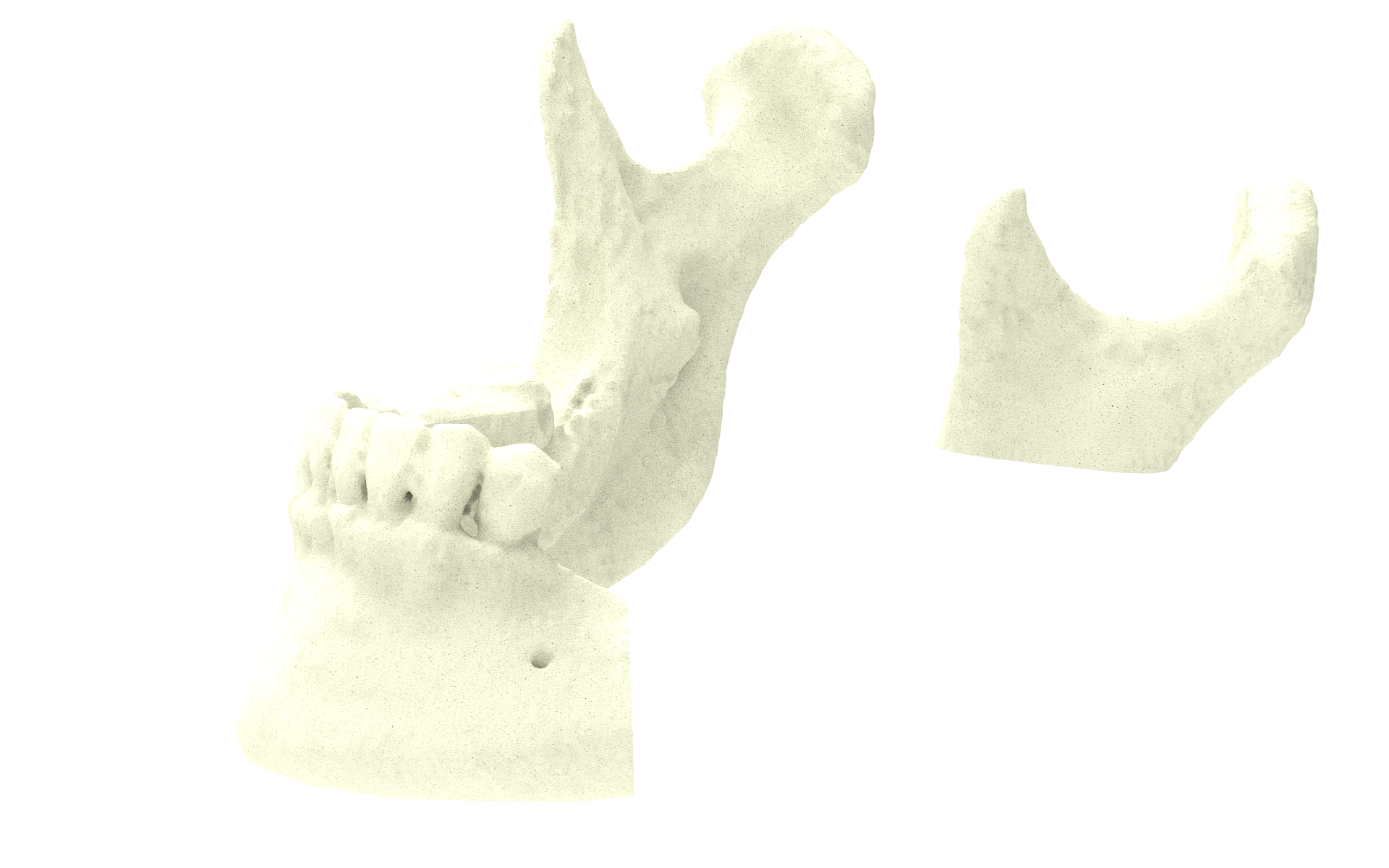
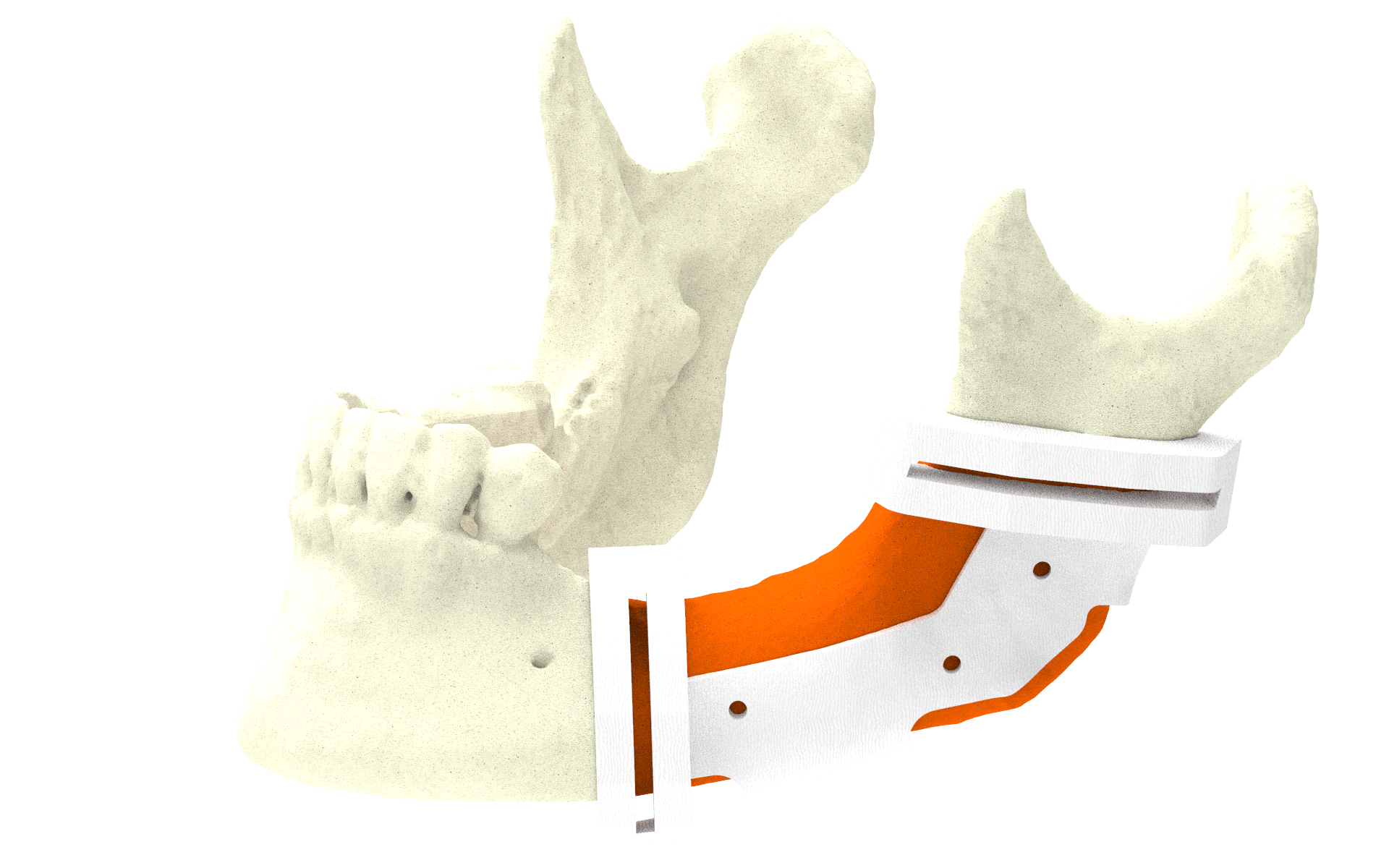
Surgical Guides to get it right
Case 1: Mandible resection and reconstruction with iliac crest
Surgical planning
Segmental resection of the mandible followed by (free flap) mandible reconstruction with autologous bone is a delicate procedure that can benefit from careful 3D surgical planning. From a CT-scan, accurate 3D bone models can be generated, which can be used in surgical planning software. You don’t need to invest money to buy, or time to learn this software, but our biomedical engineers can do this with you. Together we define the cutting planes and make a virtual resection of the mandible. Then we find the optimal position of the iliac crest within the resected mandible to achieve a good mandible reconstruction. To accurately transfer the planning to the operating room, customized surgical cutting guides are then designed by our engineers and 3D printed. These cutting guides ensure that the resection of the mandible and the resection of the bone from the donor site (here the iliac crest) are executed precisely according to plan.
Cutting guides


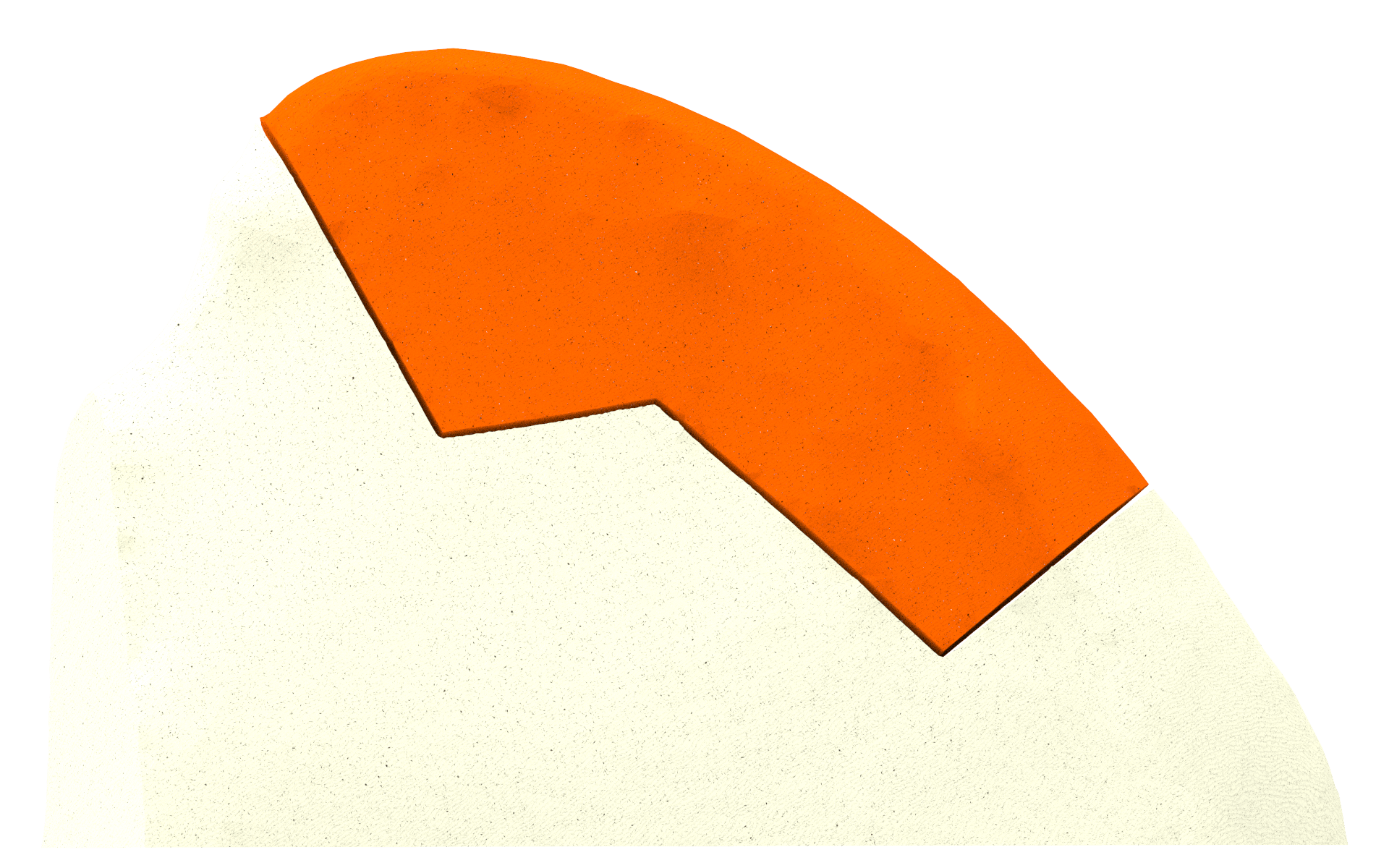
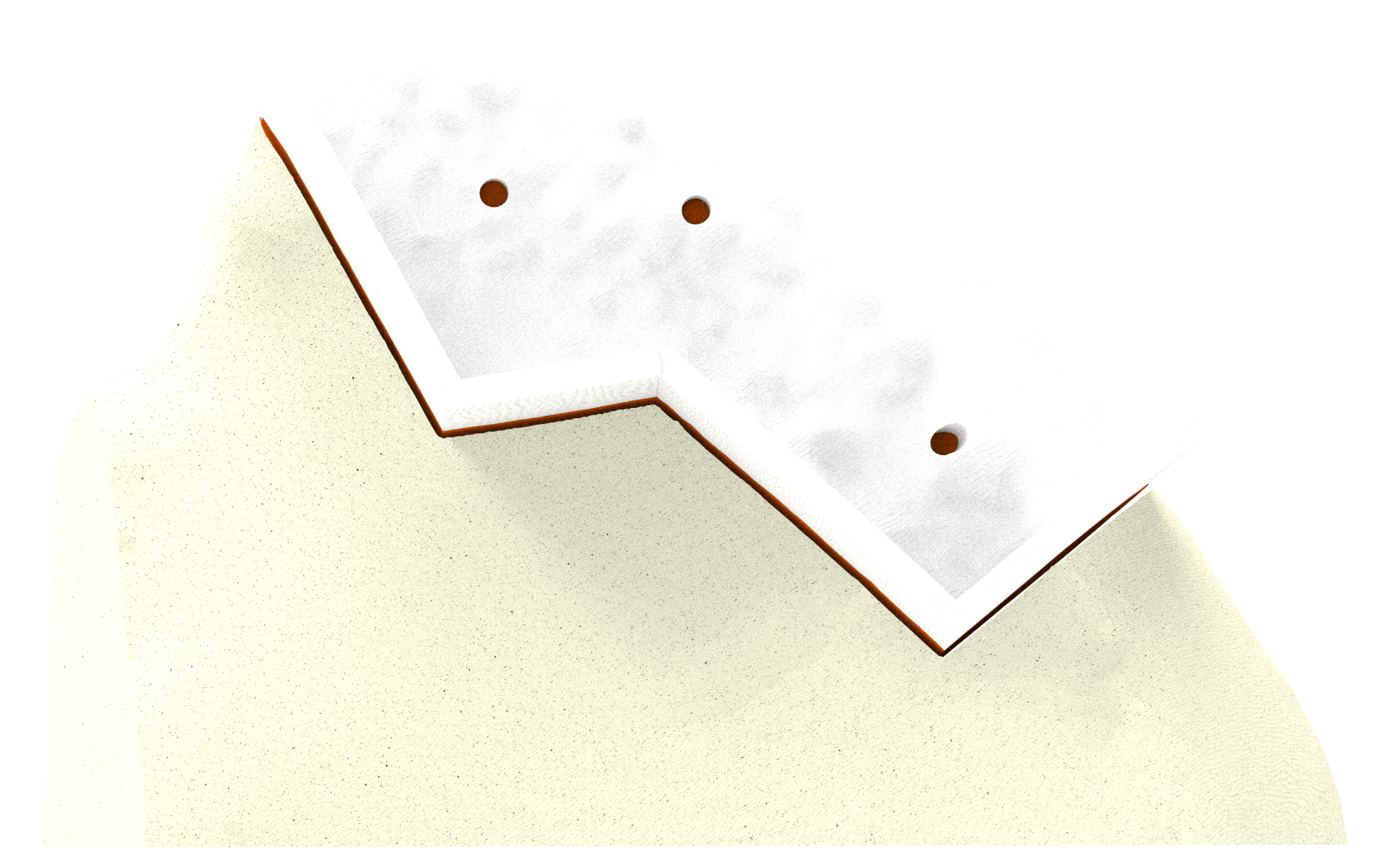
Two surgical cutting guides are designed and 3D printed in polyamide. These cutting guides fit perfectly on the mandible and the pelvis in only one orientation and indicate the outline of the planned resection area. Based on the surgeons preference, the cutting guides are either equipped with slots to cut through (see the mandible guide on the left) or with flanges to cut along (see the pelvis cutting guide on the right). The guides can be fixated onto the bone with several screws.
Production, cleaning and delivery
The surgery
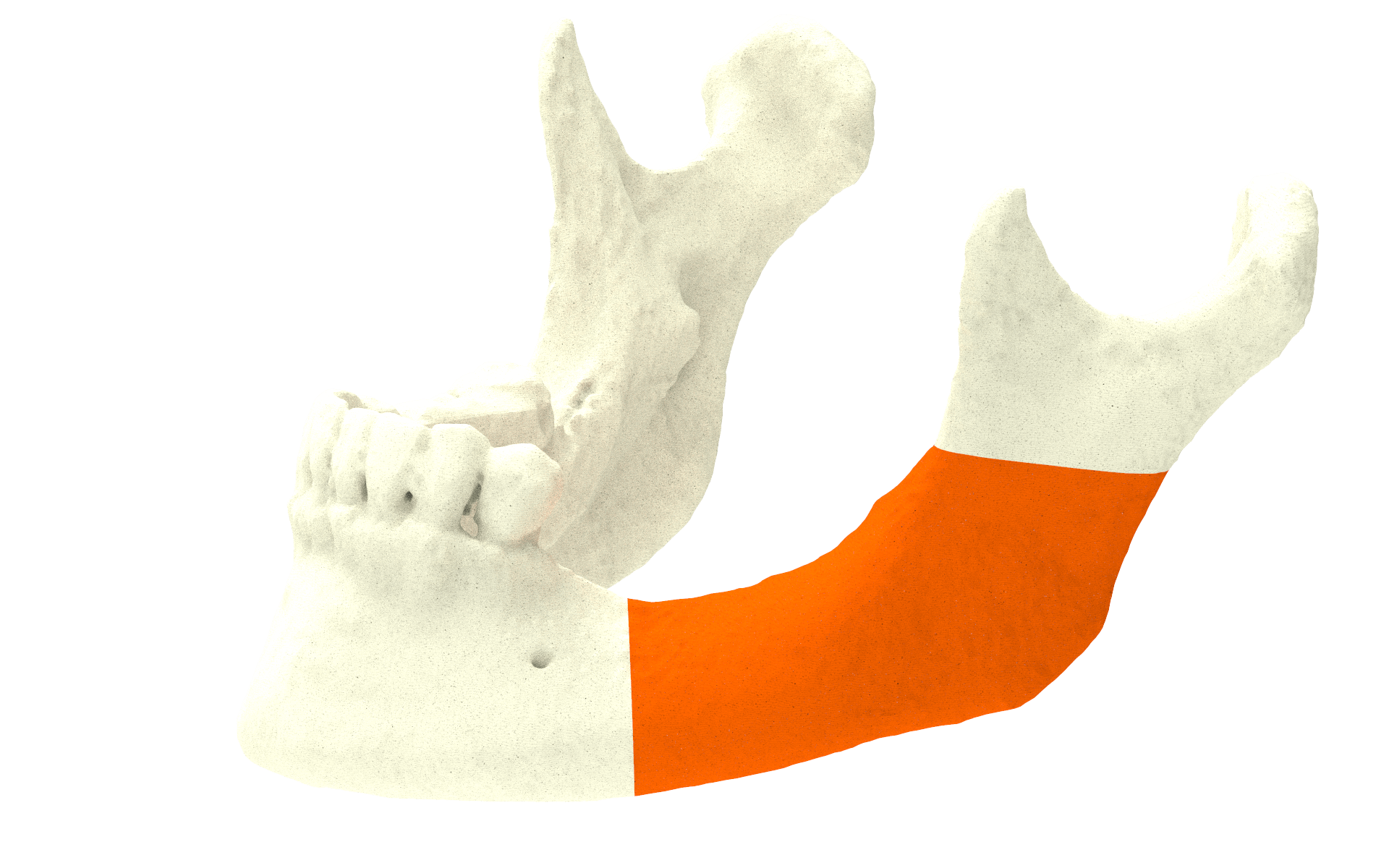
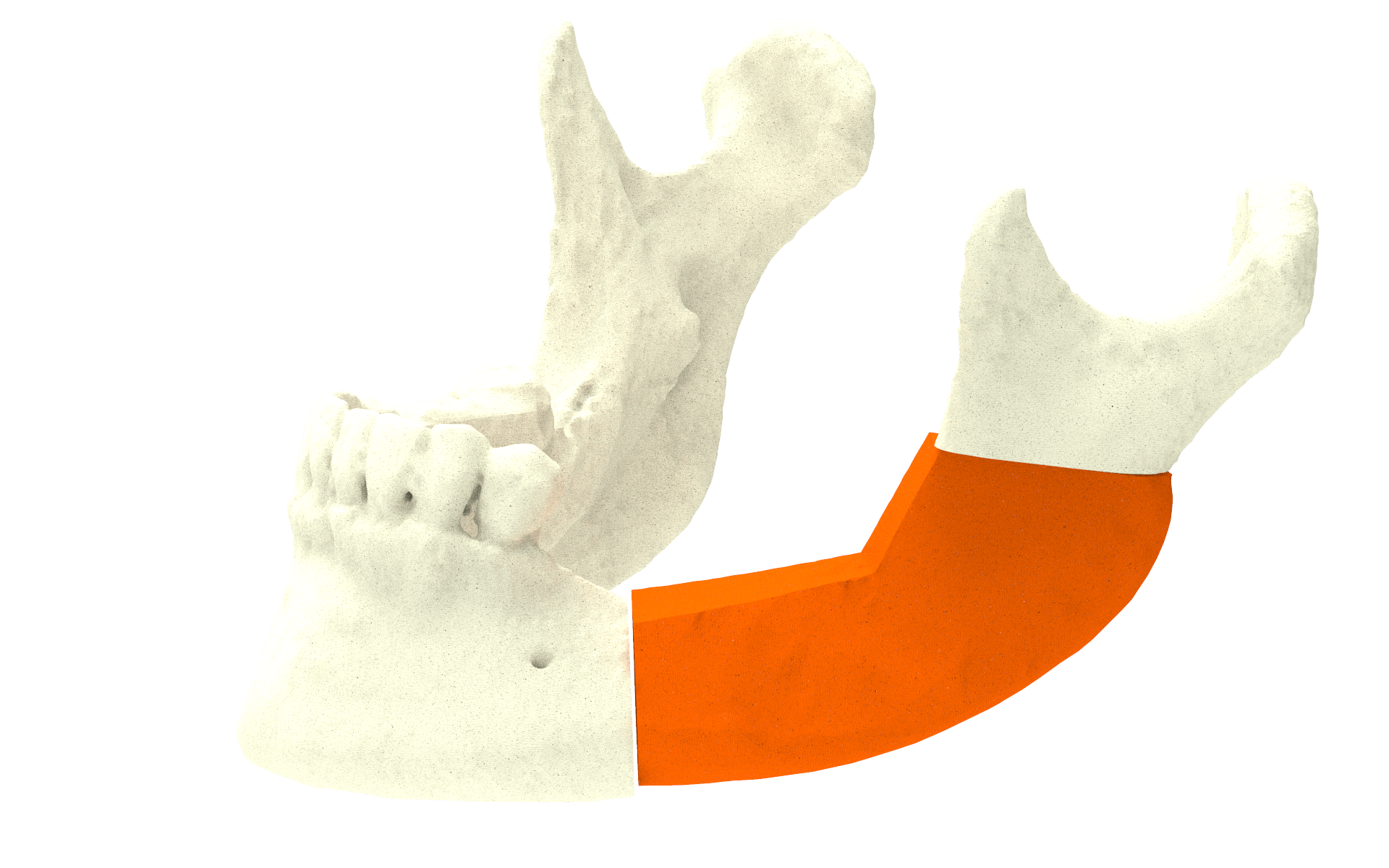
During surgery the bone is exposed and the cutting guides will fit perfectly on the mandible and iliac crest, allowing resection of the mandible according to plan. The resected part of the iliac crest can be positioned in the defect of the mandible and deep circumflex iliac artery and vein can be connected to vessels in the neck to provide blood supply. Then the (prebent or standard) osteosynthesis plate(s) can be used to fixate all the parts together.
Satisfied surgeon, smiling patient
The surgeon was very pleased with the result as seen on the postoperative CT scan. The esthetic outcome made the patient smile again.

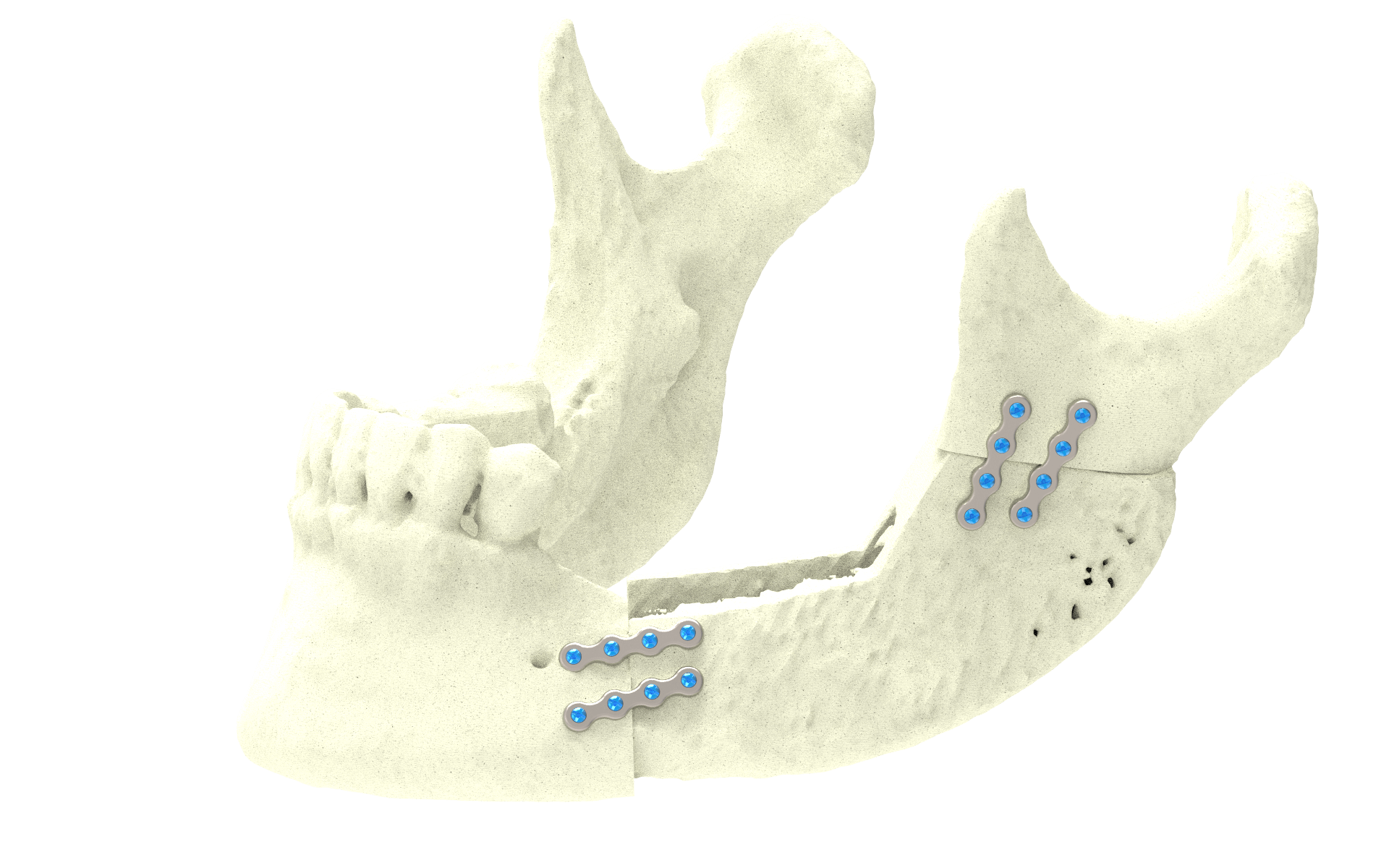
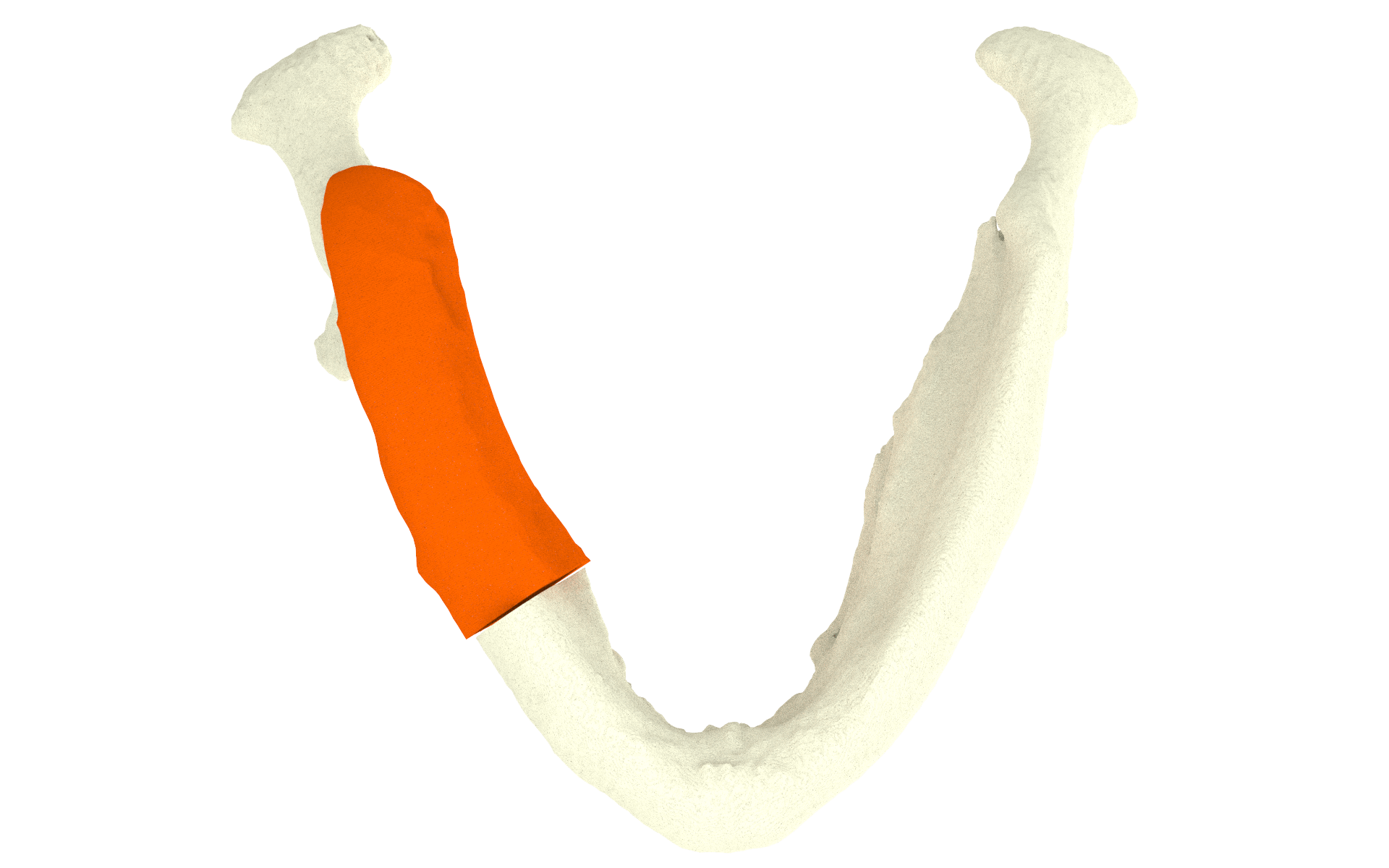
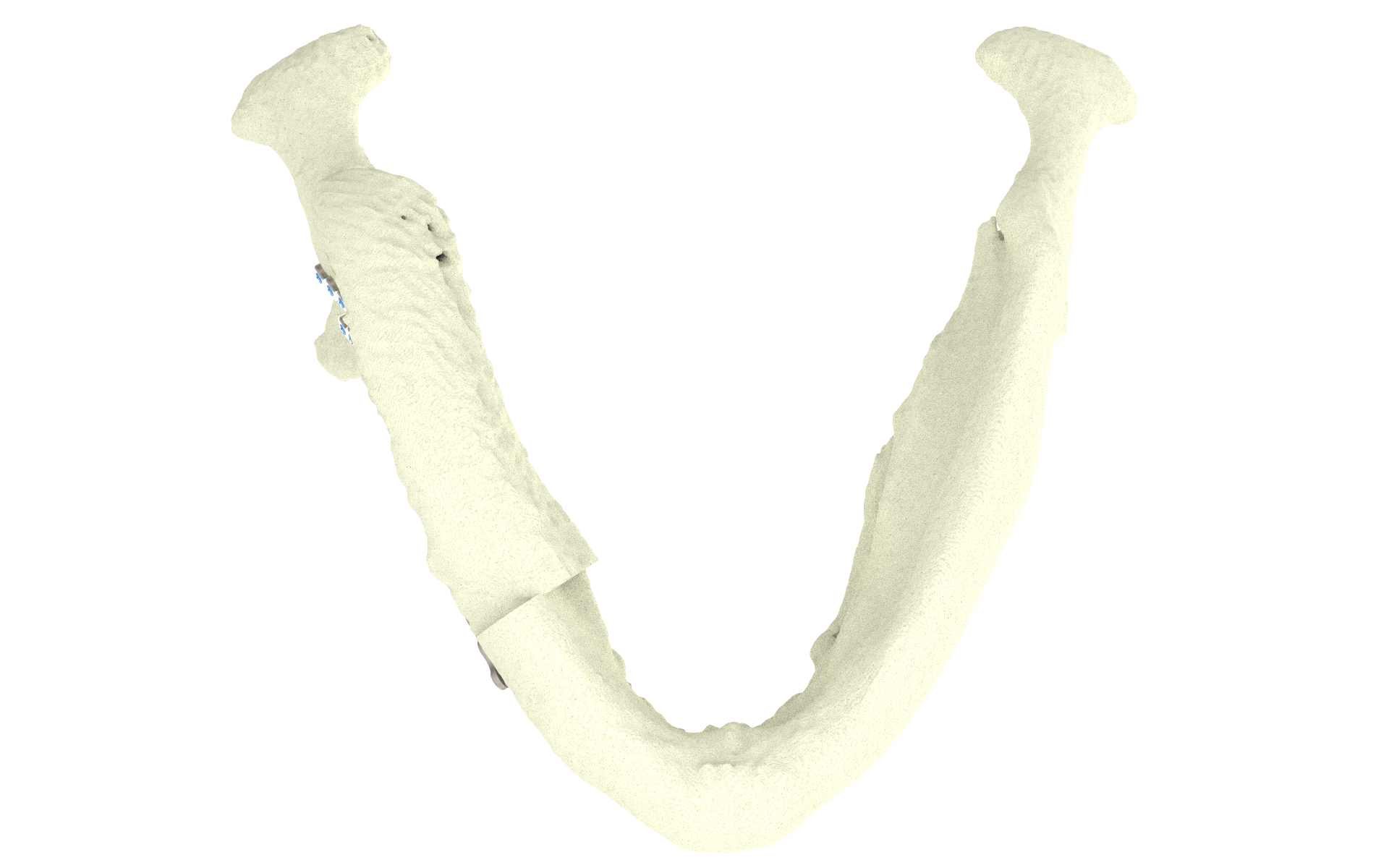
Case 2: Mandible reconstruction with fibula
Step 1: Planning your fibula graft
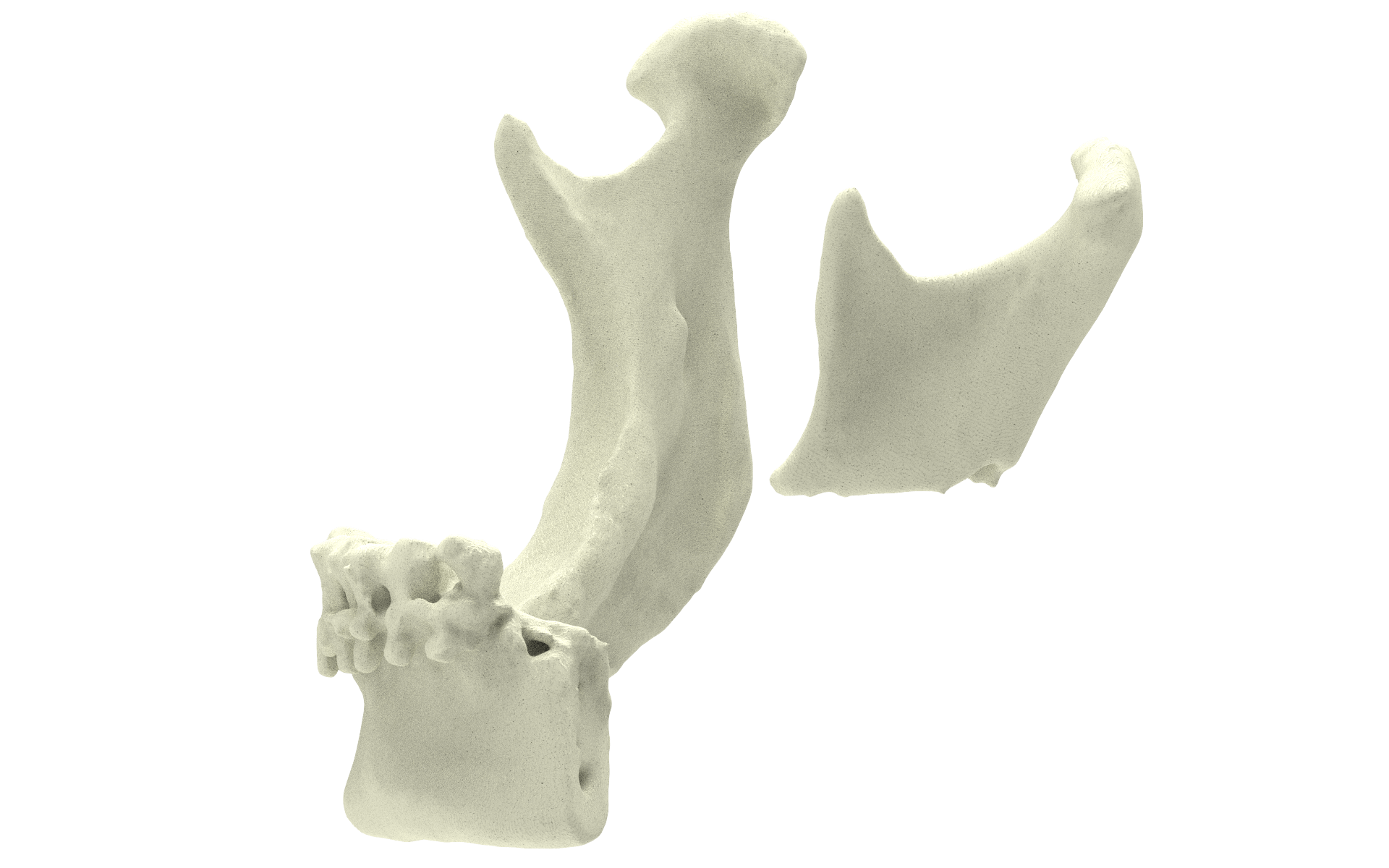
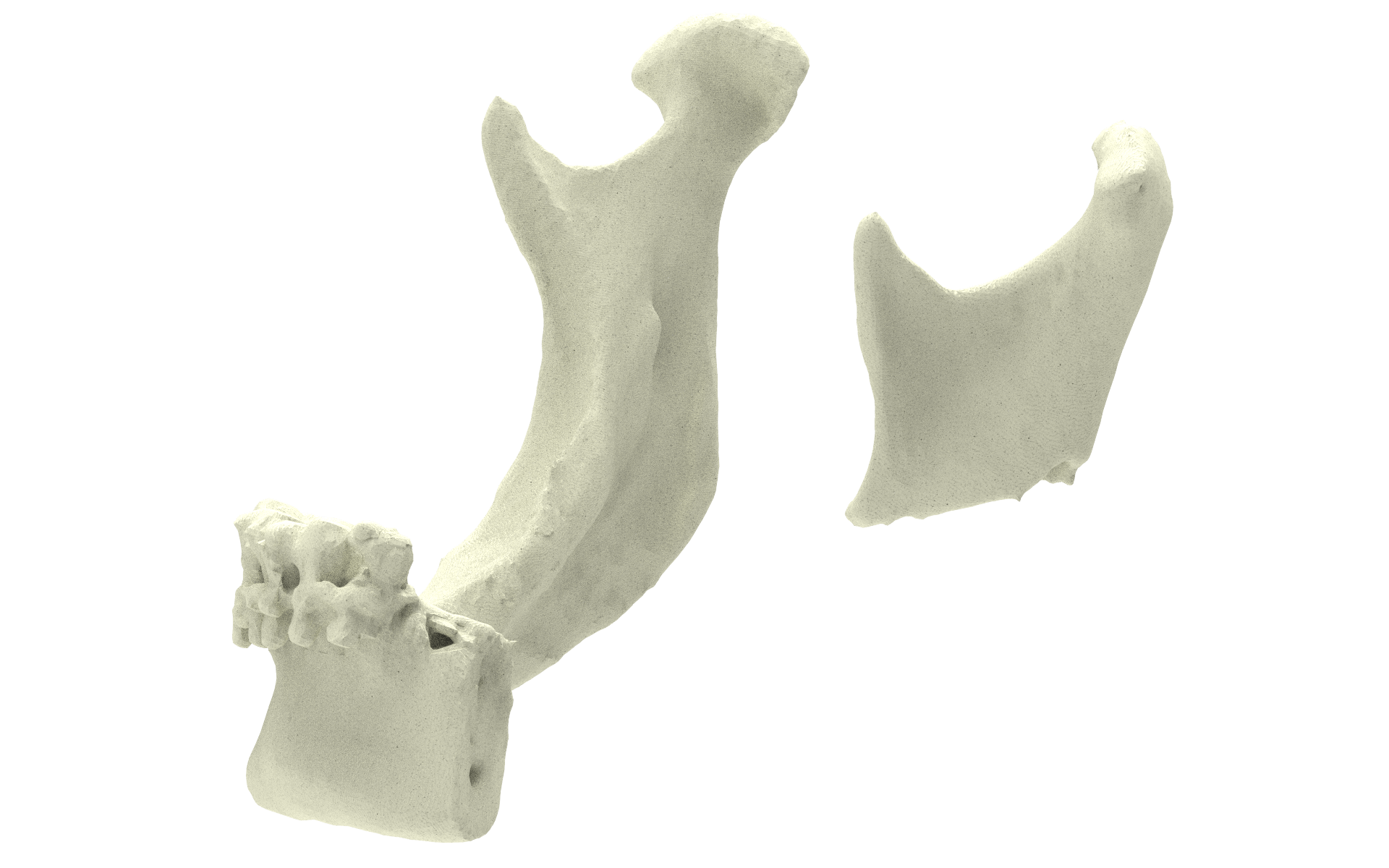
Backward planning
A pre-operative virtual planning and the associated surgical guide(s) will assist you to drill and saw in the right direction, according to plan.
“Backward” planning can be used to find the best position of the bony parts. You start by predefining the optimal position of the mandibula, which determines the void that needs to be bridged by the bone graft.
Dislocated mandibula
Virtual repositioning
Optimal mandibula position
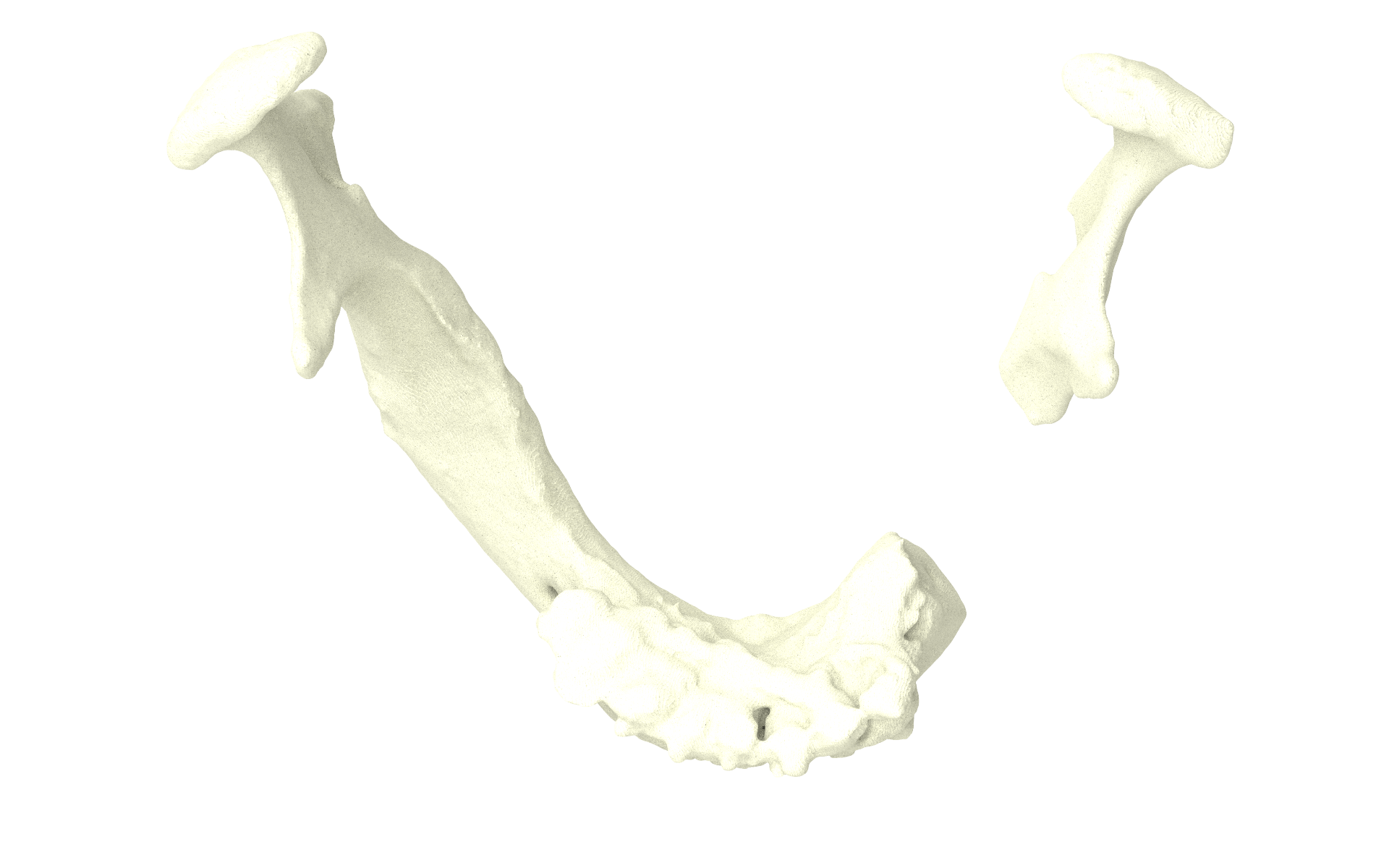
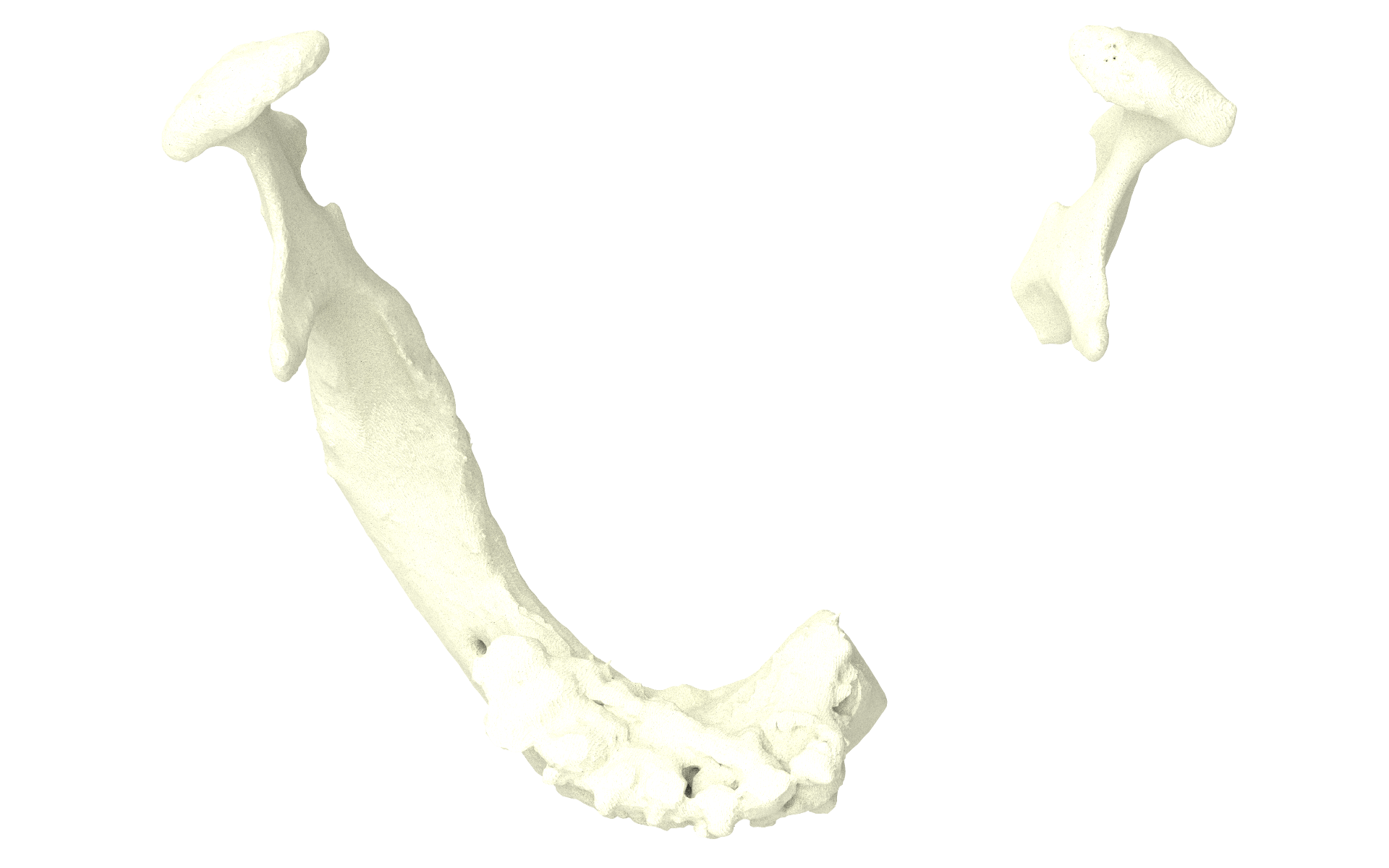
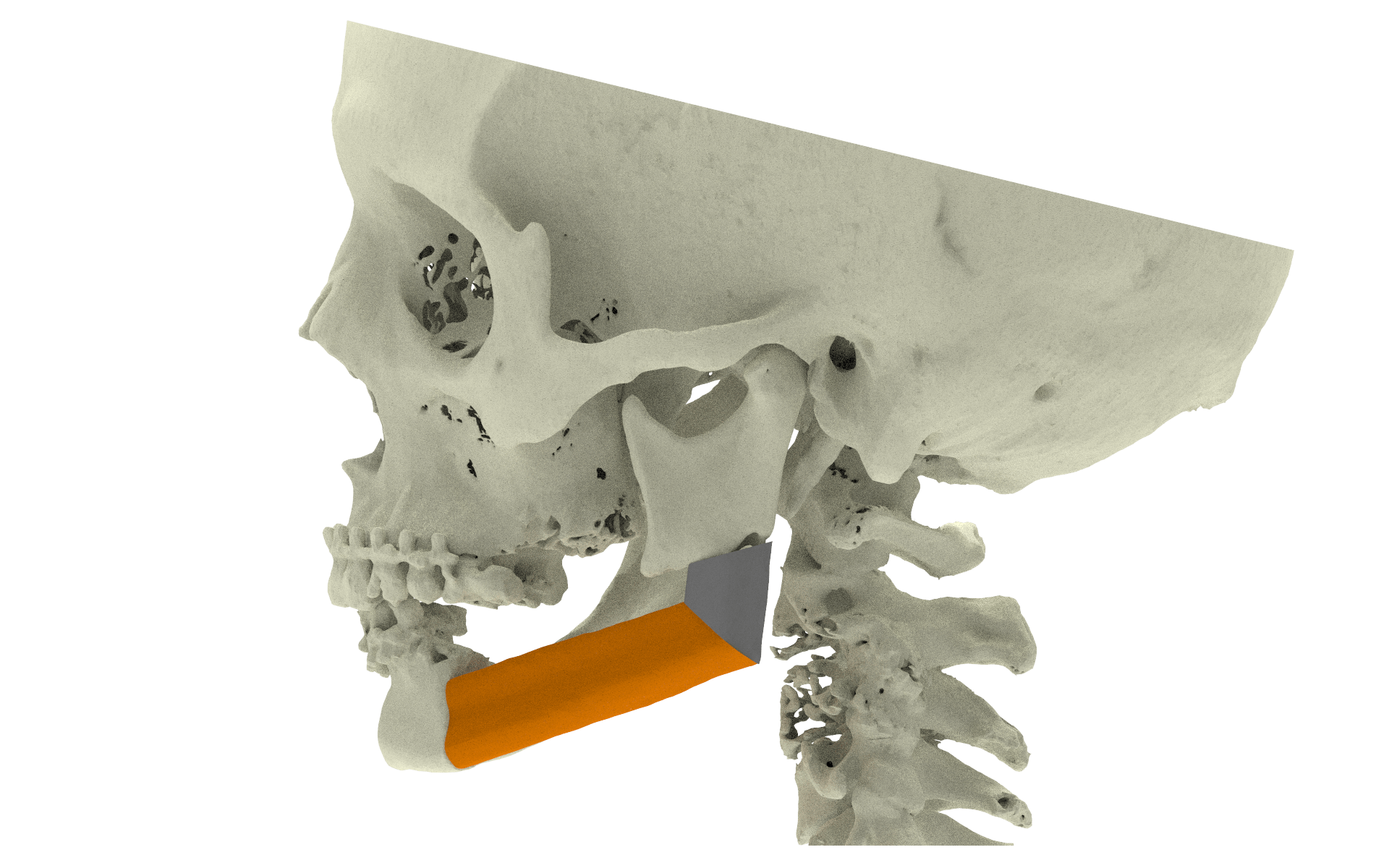
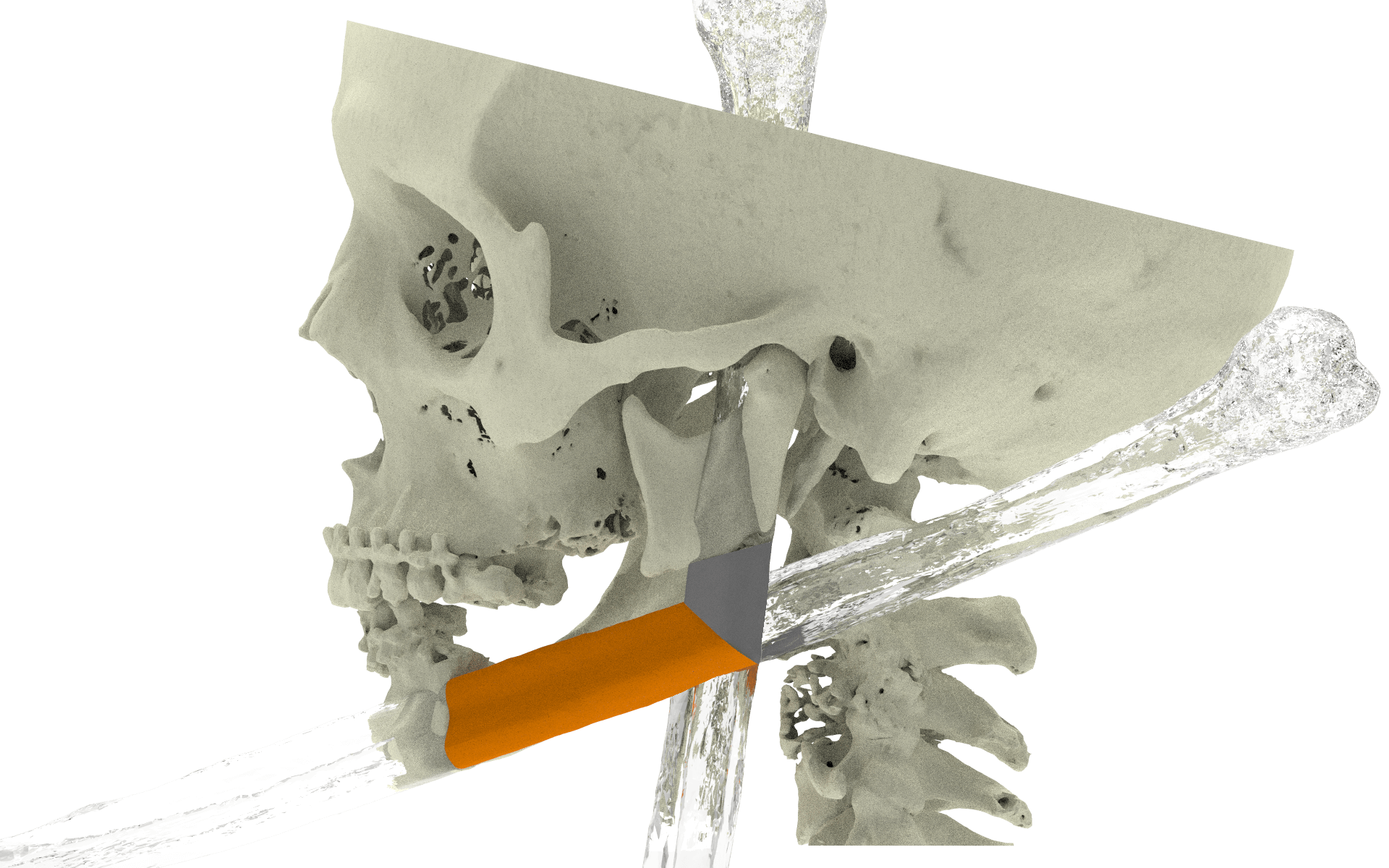
Matching the fibula to “bridge the gap”
Using a Computed Tomography (CT) scan of one of the legs, the necessary bony shape can be virtually matched from the patient’s fibula.
Necessary fibula segments
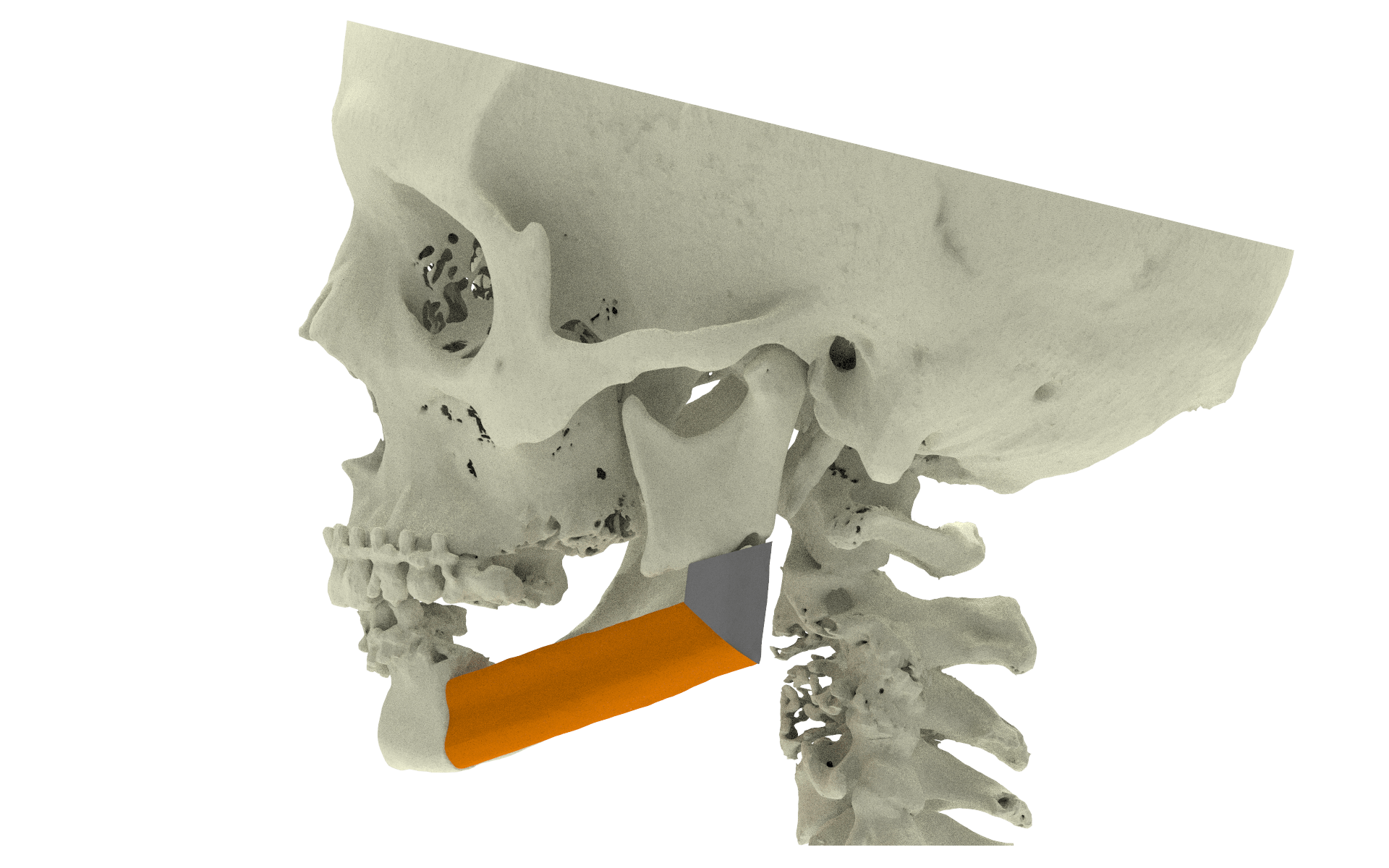
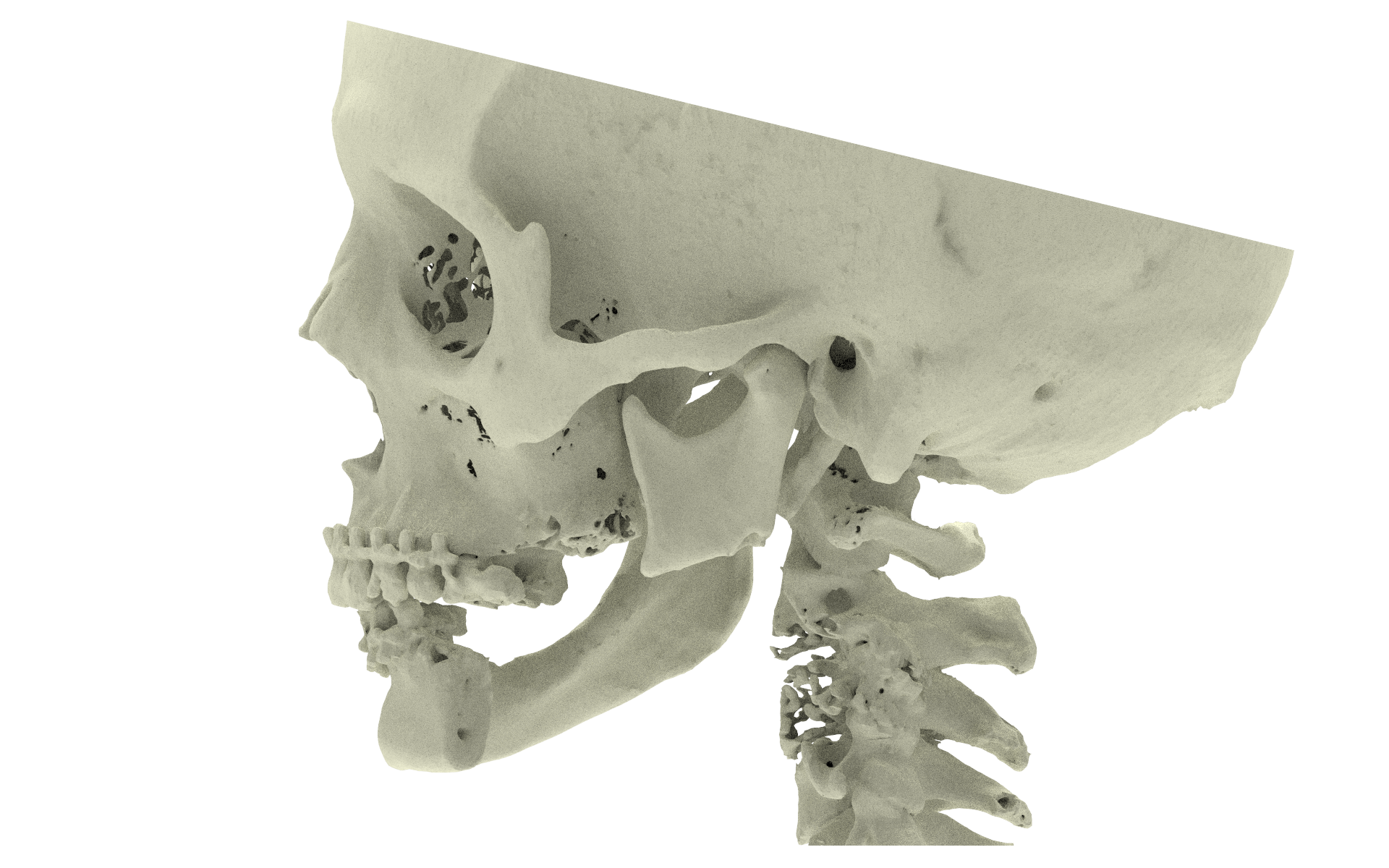
Step 2: Creating the cutting guide
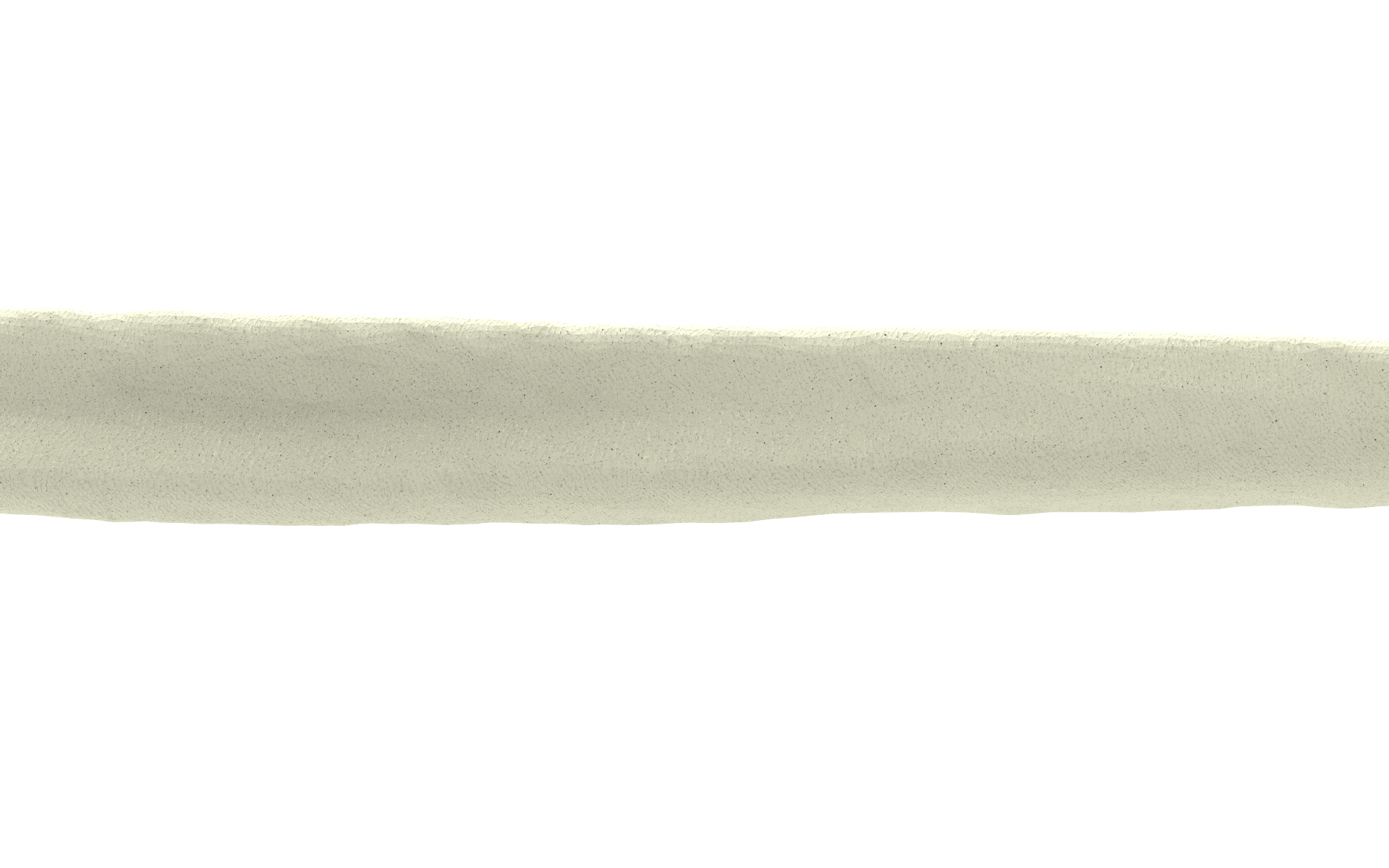
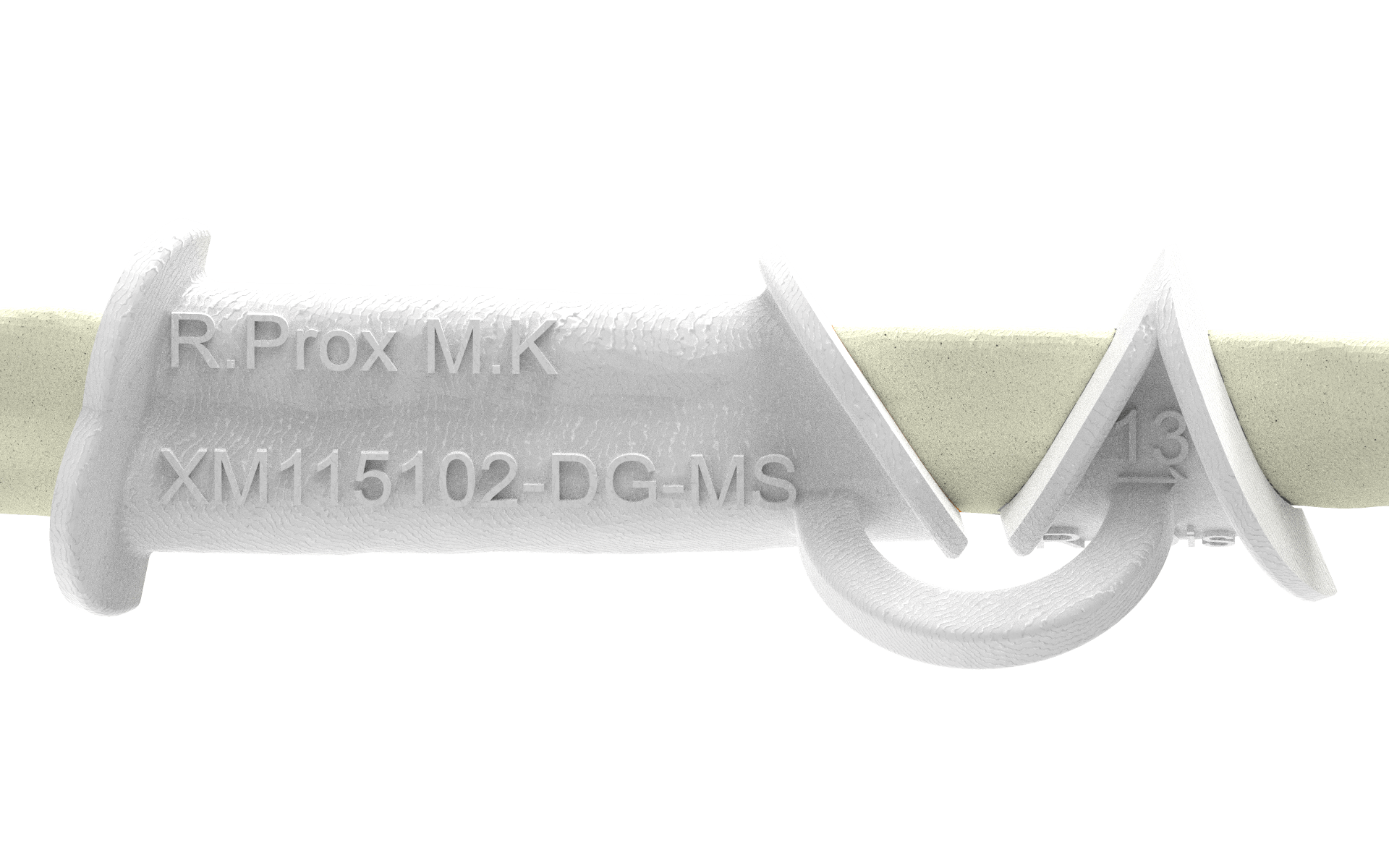
The cutting guide
The guide is designed in such way that it matches the patient’s anatomy perfectly and only fits on the region determined above. For the surgeon to know where to open the patient’s leg, we can indicate the approximate position, in centimeters distance from the ankle point. This is done by engraving a number in the guide, number 13 in the example below.
Cutting
Cutting along the four angular planes will create the two pieces of fibula needed for the mandibula reconstruction.
Graft
Now you have two perfect graft pieces, ready to be placed.
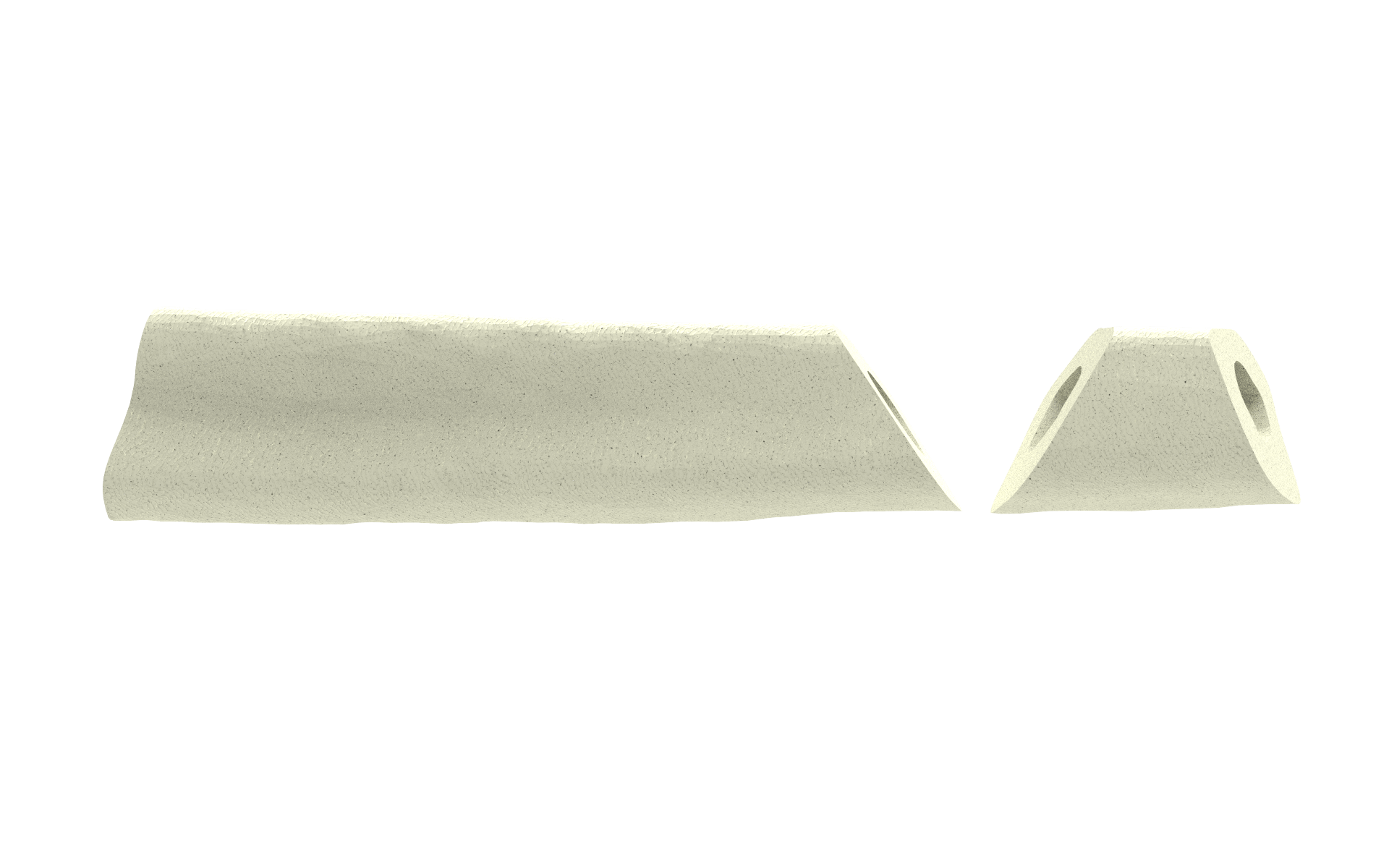
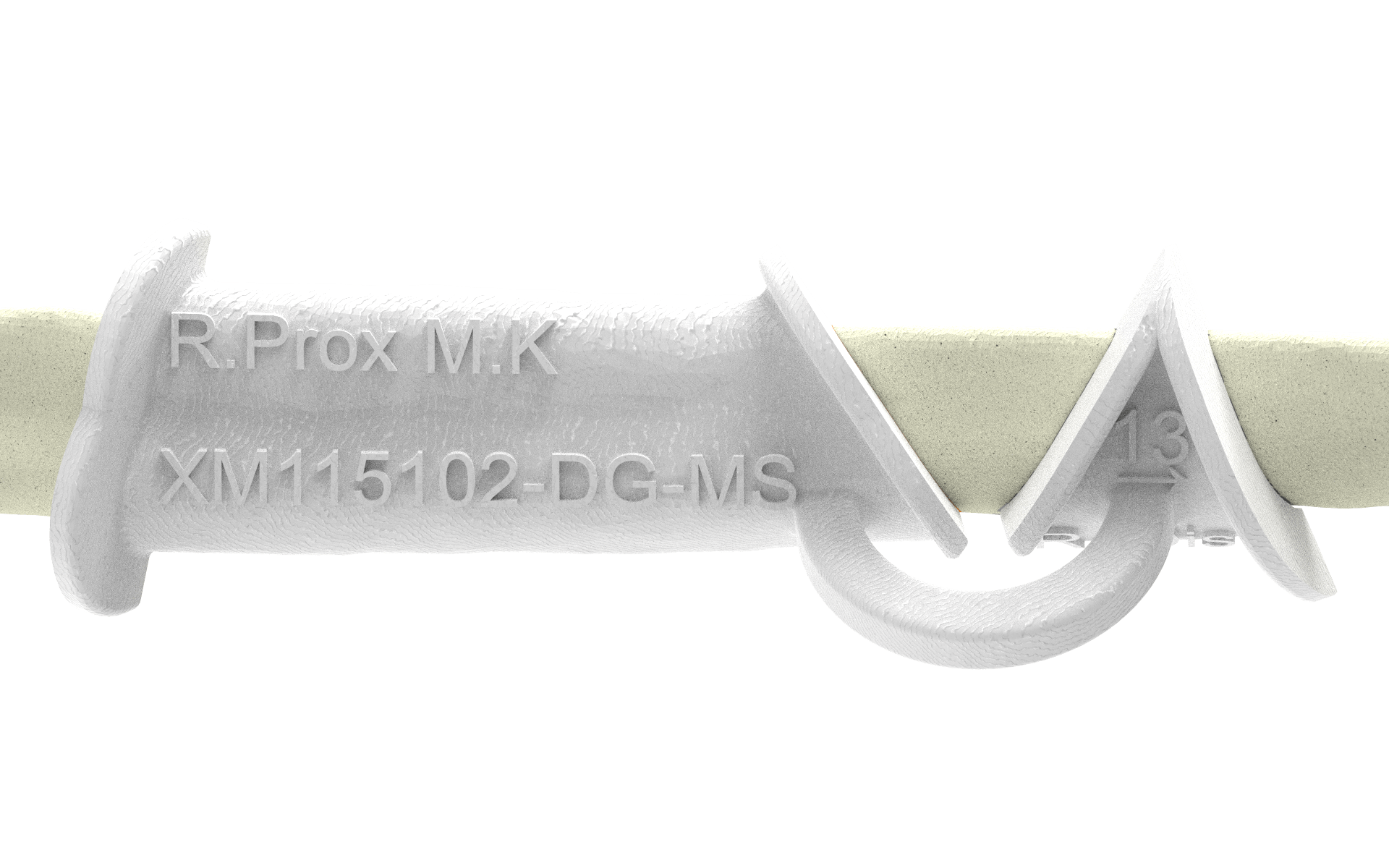
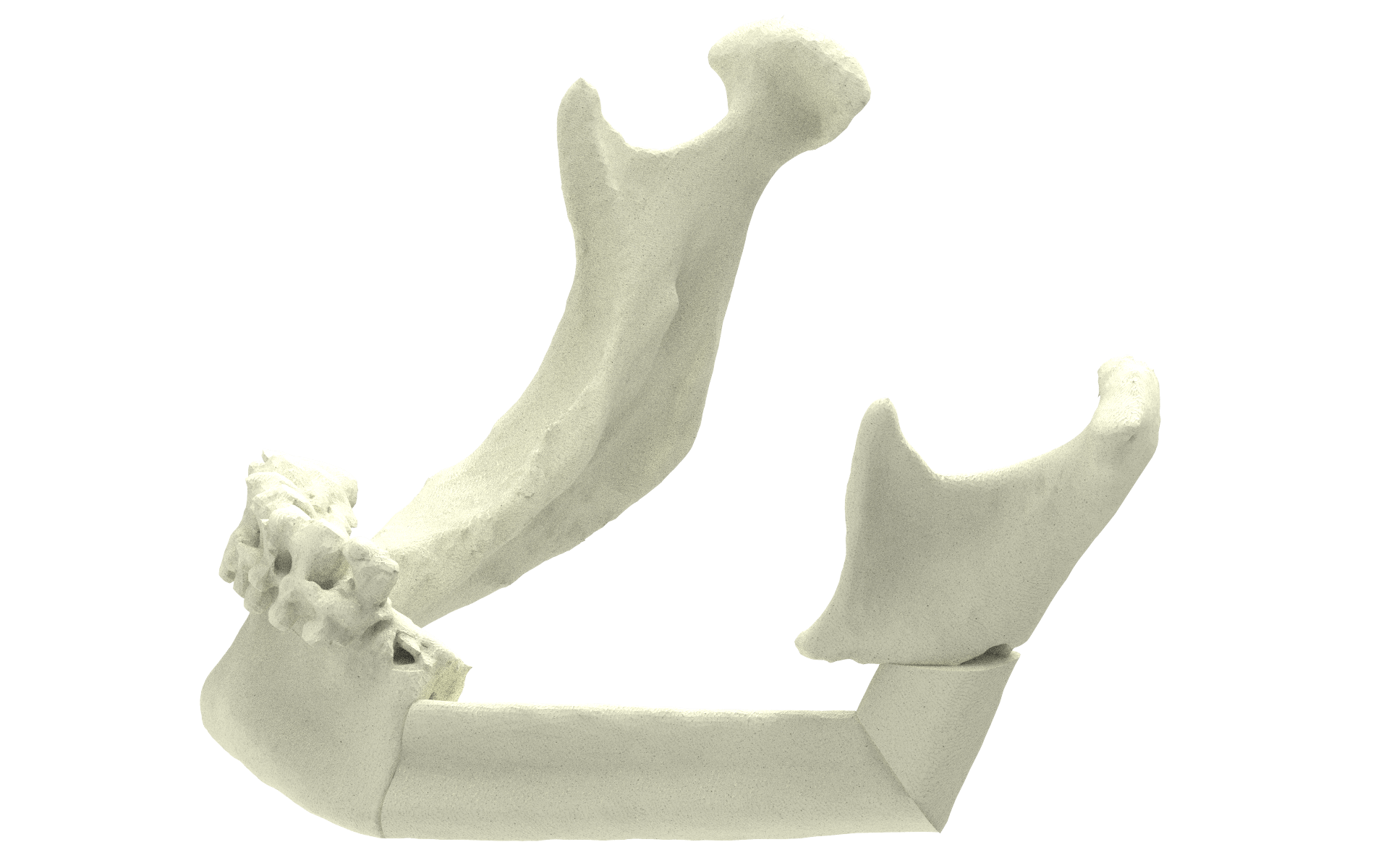
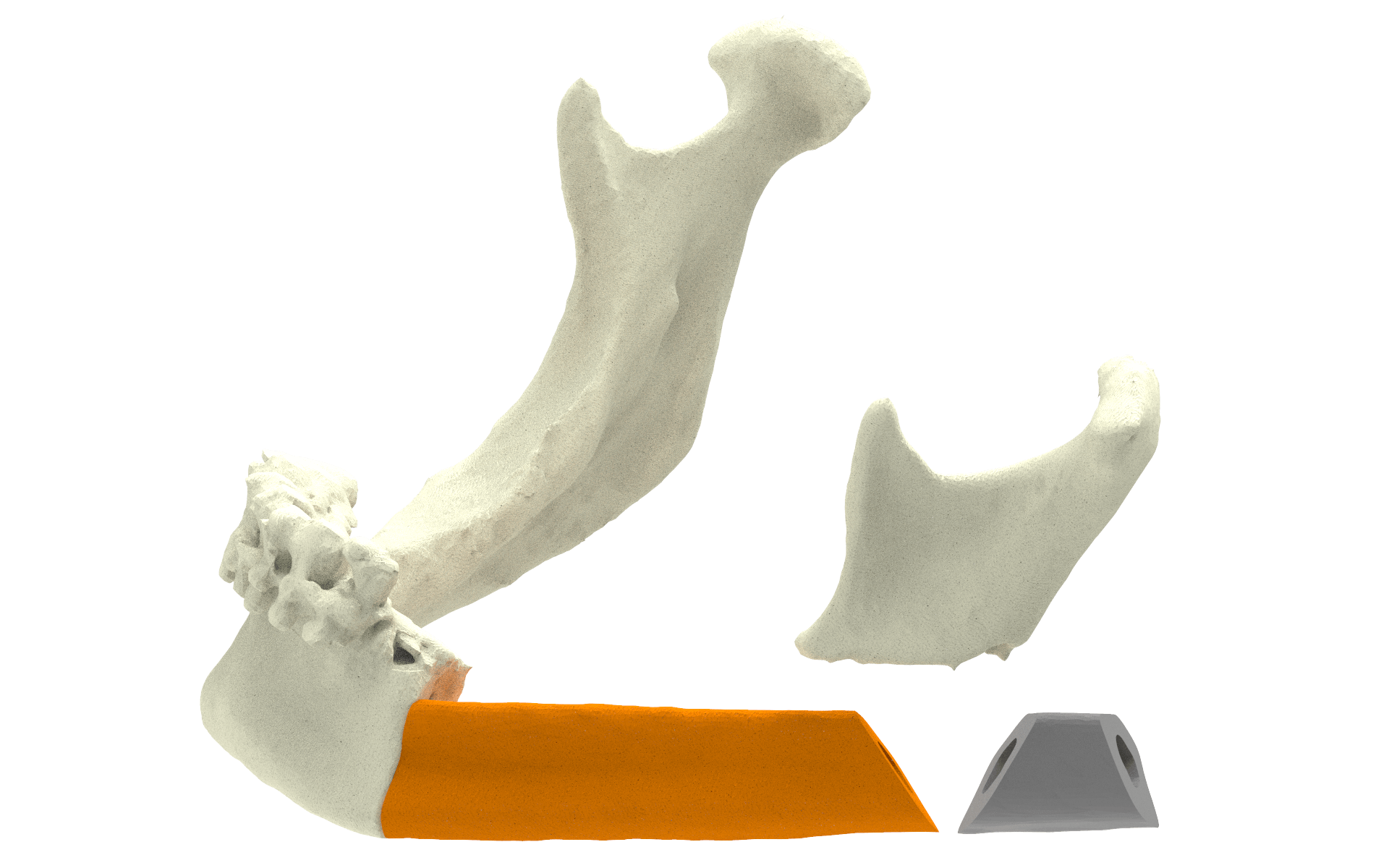
Placing
The fibula pieces match the jaw and each other.
Fixating
Together, they make the right angle.
















